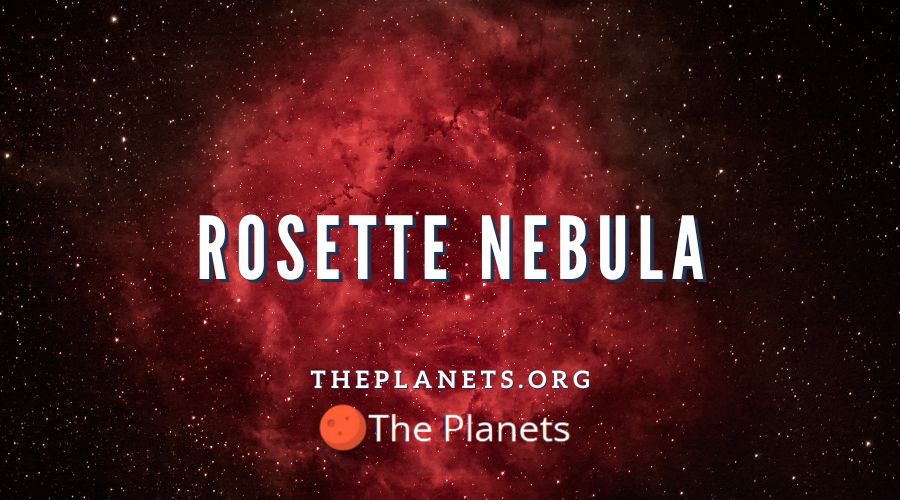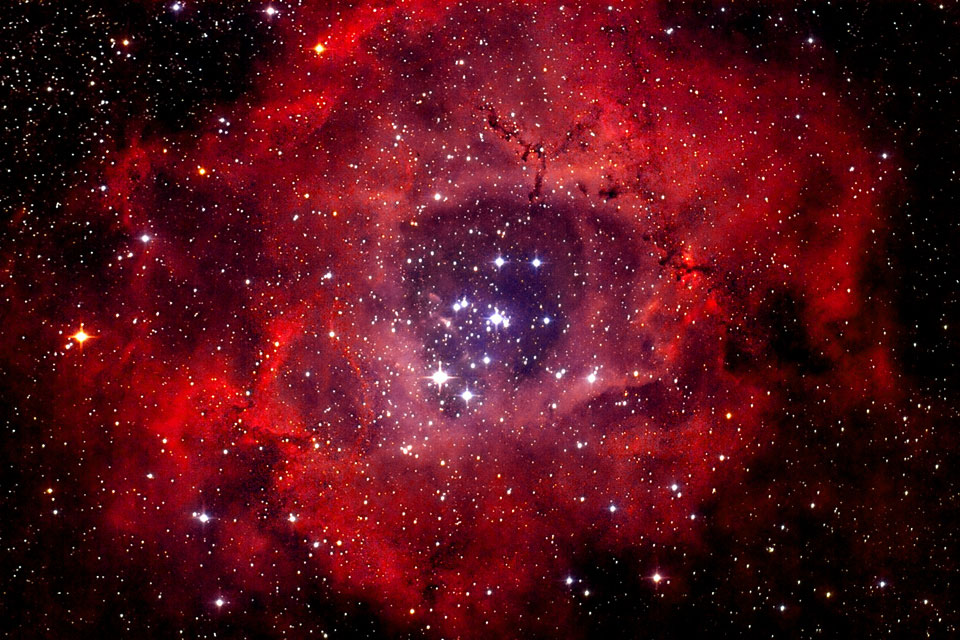
Astrophotographers (photographers who take photos of space using telescopes) captured images of the lovely Rosette Nebula. The bright, colorful pictures reveal an eye-catching region of space! The nebula displays a clear center. In many images, vibrant pink and red dust clouds extend outwards from the center, somewhat resembling the petals of a red rose.

Facts About The Rosette Nebula
Even though the Rosette Nebula lies far away from Earth, scientists have discovered some amazing facts about it. It extends across a vast distance. The Rosette Nebula possesses a diameter of about 130 light years!
To really appreciate the size of the Rosette Nebula, consider this fact: a “light year” refers to the distance light travels during a single Earth year. Scientists consider 1 light year equal to about 6 trillion miles. So if you wanted to travel through the Rosette Nebula, you would need to journey 130 times 6 trillion miles, or a total of 780 trillion miles.
The Constellation of The Rosette Nebula
Even though humans cannot see the Rosette Nebula itself at night by sight alone, early star gazers did observe some of the stars forming the Monoceros Constellation. A constellation refers to a pattern of stars. The name “Monoceros” comes from the ancient Greek language. It means “unicorn”.
The unicorn was a mythical animal. It resembles a horse, but has a single horn growing in the center of its forehead. Many legends exist about lovely unicorns. When ancient stargazer studied the night sky, they often noticed star patterns which they believed resembled objects or people. These early astronomers described recognizable groupings of stars in the night sky as constellations.
Finding The Constellation Containing The Rosette Nebula
Even though you cannot see the Rosette Nebula without binoculars, you can look at the sky at night to see the Monoceros Constellation. It is one of the faintest constellations. Spotting it sometimes proves challenging for this reason.
The Monoceros Constellation lies along an imaginary line drawn between two bright star constellations, Canis Major and Canis Minor. People who enjoy stargazing sometimes spot this faint constellation in the sky on a dark night during cloudless weather. It remains one of the most difficult constellations to detect, perhaps because it lies so far away from the Earth.
Discovery of The Nebula
Before the invention of accurate ways to measure the Earth, sailors often relied upon stargazing to help them travel across the ocean safely. Mapmakers assisted them by charting the constellations to help guide ships. A Dutch clergyman and astronomer named Petrus Plancius spent time creating maps. He crafted a globe identifying the Monoceros Constellation in 1612 or 1613.
Several decades later, in 1690, an English astronomer named John Flamsteed may have noted the presence of part of the Rosette Nebula within the Monoceros Constellation. His widow published his star catalogue in 1725 and his star atlas in 1729. A famous English astronomer named Sir John Frederick William Herschel possibly reported on another part of the nebula over a century later. He published a study of nebulae in 1864. It updated information first reported by his father, Sir William Herschel, who also worked as an astronomer.
In the early 1880s, two American astronomers working separately to discover comets both identified the Rosette Nebula accurately for the first time within the Monoceros Constellation. Lewis Swift and Edward Emerson Barnard confirmed its existence. Scientists have studied the Rosette Nebula extensively during the past century.
Modern Research Into The Rosette Nebula
Since the 1880s, scientists have learned remarkable facts about the Rosette Nebula. Today, they classify several different regions within this cloud of dust and gas, including: NGC 2237, NGC 2238, NGC 2239, NCG 2244, and NGC 2246. They have begun mapping the nebula.
The abbreviation “NGC” stands for the words “new general catalog”. It updates the catalog of nebulae compiled by a Danish astronomer named Johan Ludvig Emil Dreyer. In 1888, he updated and revised the nebulae catalog compiled by the English astronomers Sir John Frederick William Herschel and his father. The effort to map nebulae demonstrates how discoveries made by one scholar sometimes assist other scholars many years later.
Exciting Discoveries About The Nebula
Today, scientists believe nebulae form for two reasons: the “death” of a star or the “birth” of stars. The gases and dust within a nebula usually consist of Hydrogen and Helium. This material sometimes spreads through space as the result of the explosion of an old star called a “supernova”.
In other cases, NASA reports space dust clumps together in “star nurseries”. When tightly packed clumps of dust and gas collapse inwards, they heat up. New stars possibly arise in these sites. Many scientists believe the central clear region of the Rosette Nebula contains several recently formed stars. The red areas of the Rosette Nebula likely produce stars!